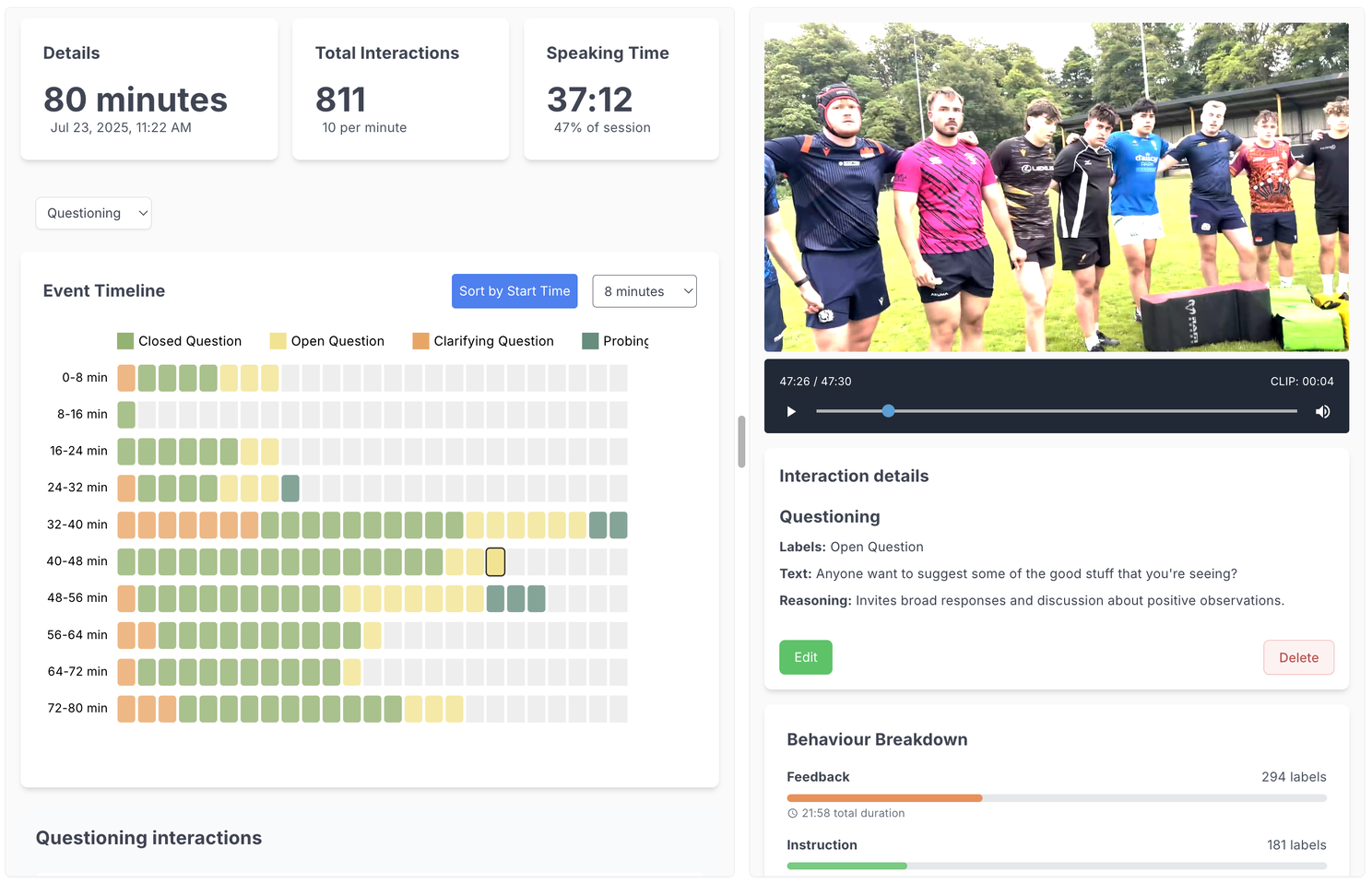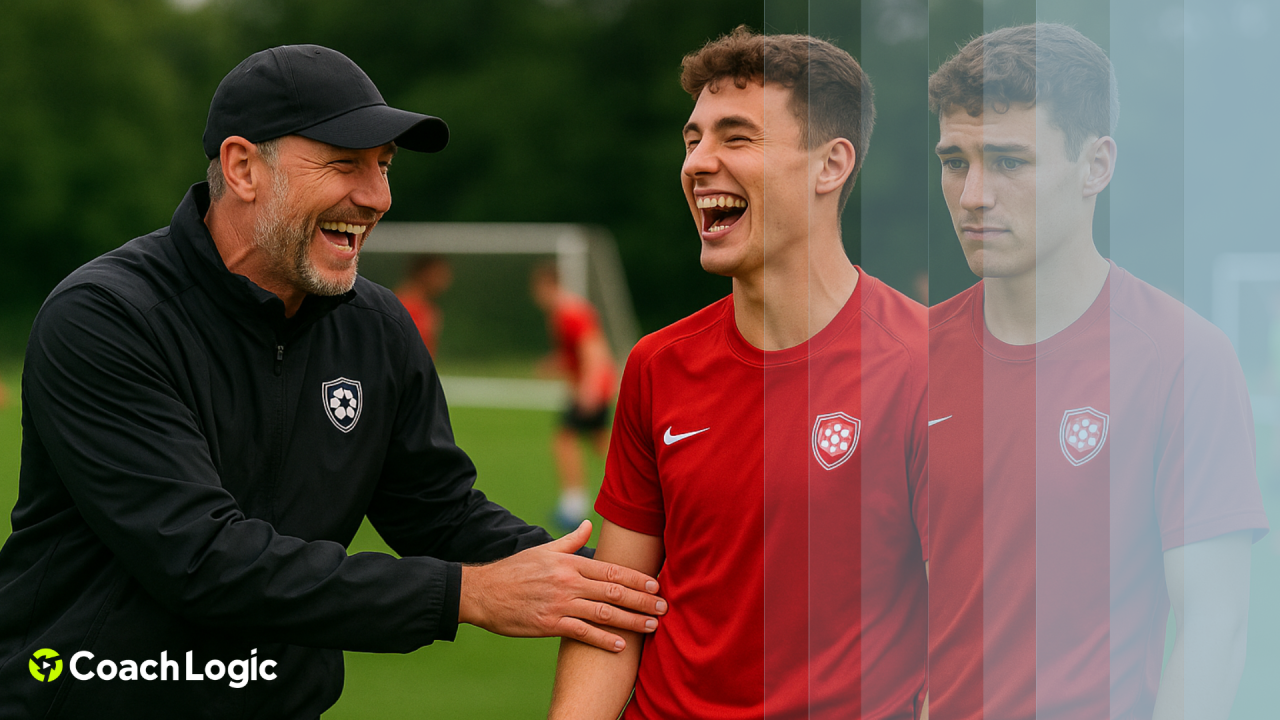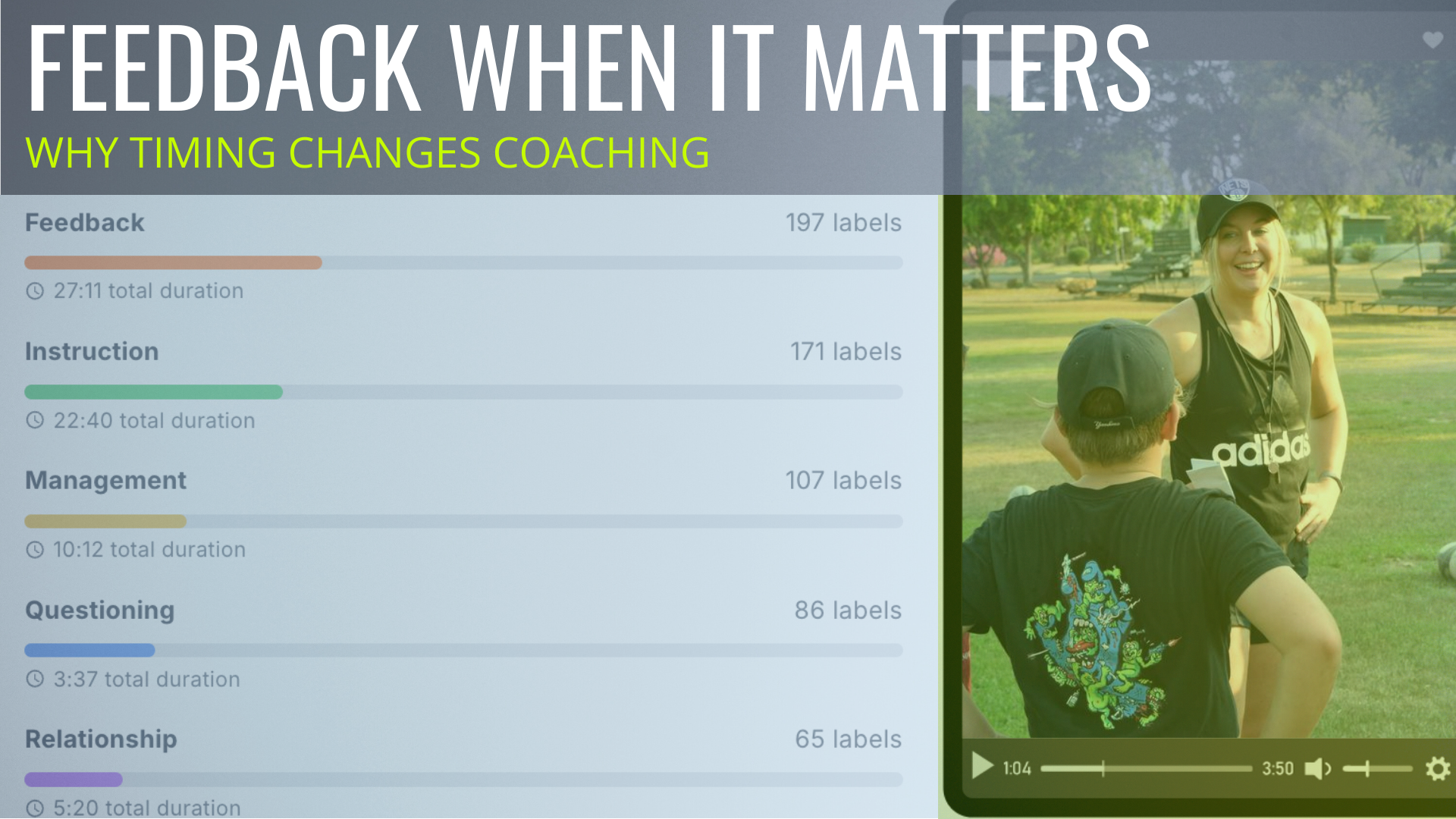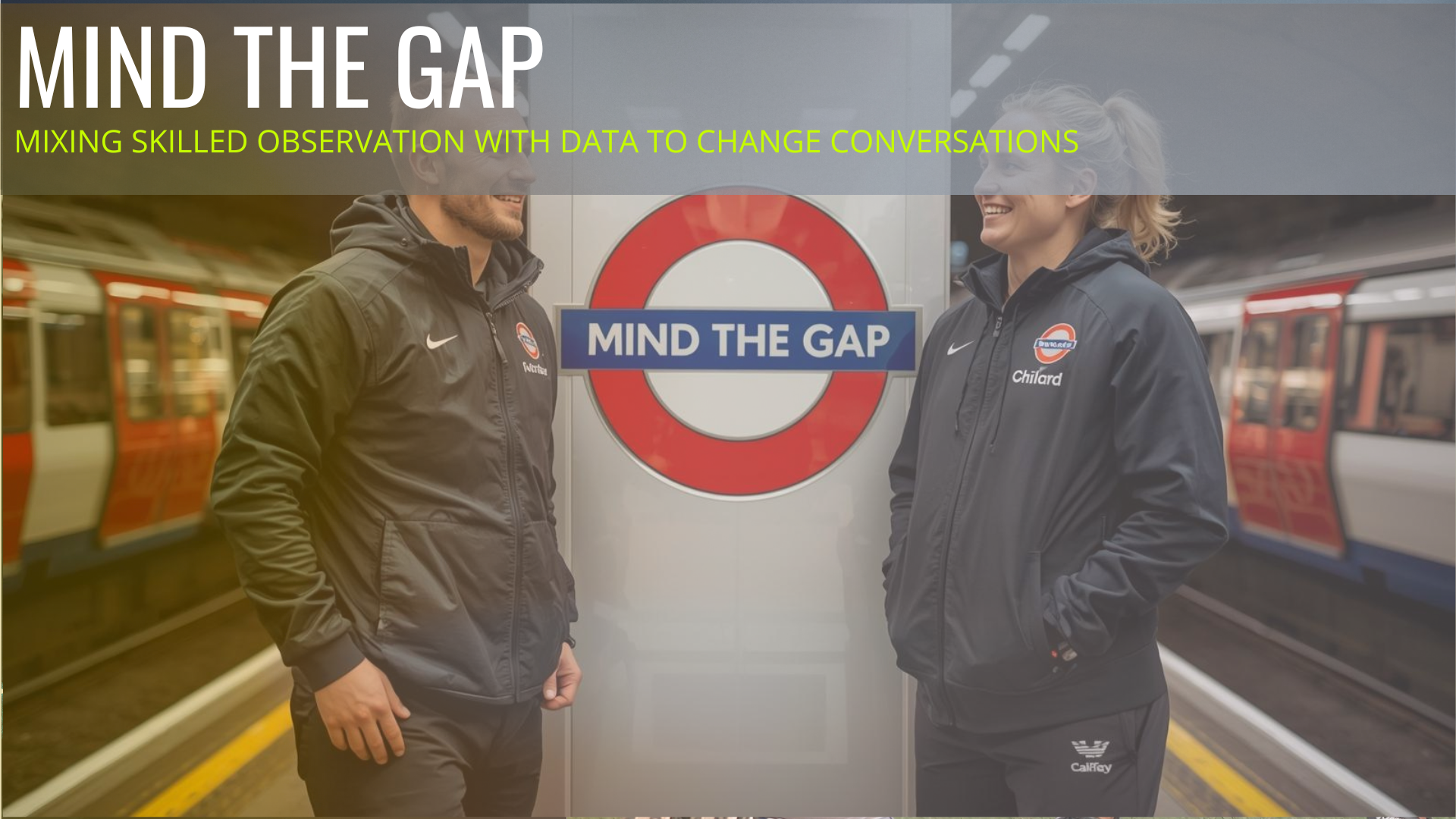From ‘Banter’ to Better Coaching: How One Flagged Moment Changed a Coach - Player Relationship
It's early days, but this may turn out to be one of the most impactful things we hear about how SAM supports coach development on the field, court, rink.
A coach recently shared a powerful story about the impact SAM, our automated coach observation assistant, had on their coaching practice and relationship with a player. We've anonymised the detail, but the learning is real.
I've got a feeling! The moment SAM identified
During a review, the coach opened SAM’s dashboard of their recent coaching session and headed straight to the Relationship filter and a short clip. Something he said in a one on one conversation with a player had been gnawing away at him.
He'd made a throwaway comment to a player, who he has a very good relationship with, about his fitness and physical shape meant as light-hearted banter. But, the more he thought about it, the more compelled he was to check it out.
Seeing it isolated, with the sentiment and context tags, it landed differently and he was right to revisit it, but even then he wasn't aware just how important it was:
“It gave me a moment to think… what was the purpose of that comment? Was it supportive? Motivational? Or just noise?”
Because SAM connect reflections to the exact second they occurred, the coach could replay tone, timing and body language, not just the words. He realised the 'banter' didn’t move the session forward and might even have chipped away at trust.
The impact is real! Reflection that led to action
Prompted by that clip, the coach called the player. The player, knowing the coach well, made it clear they were ok with the ‘banter’ but the conversation opened a door.
The coach wanted to help and the following chat uncovered some challenges the player was facing away from the sport, but were also having a direct impact on their ability to train and perform. Practical steps followed: a GP referral for alternative medication, support for sleep screening, and a plan for low-impact conditioning.
A powerful outcome for player and coach.
The coach’s verdict?
“That’s the power of it. Although you won’t agree with everything SAM picks up, it focused my attention on a moment that mattered, and I acted.”
From snapshots to processes
A single clip is a snapshot. Development is a process. SAM’s role is to help shift your review from isolated incidents to an ongoing cycle:
- Pre-session intentions – Capture what you’re aiming to practise (e.g., more guided discovery, fewer directives).
- In-session capture – Record on a phone; SAM handles transcript and tagging.
- Flagged moments – Use filters (Relationship, Questioning, Instruction, Praise, etc.), talk-time and sentiment timelines to find patterns.
- Post-session prompts – Brief, scaffolded questions to translate reflection into action.
- Follow-up – Track change across sessions with trend badges (“highest questioning rate so far”, “non-speaking time goal hit”).
Human skill is still the critical ingredient.
SAM is “skilful” because it draws attention to the right places; great coaches are skilful because they turn insight into better practice and stronger relationships.
Why tone and “banter” deserve scrutiny
Humour can just as easily bond a group as isolate someone on a tough day. Research suggests intent, audience and timing all matter.
SAM won’t tell you to stop joking, instead it helps you notice when levity slips into critique, or when it crowds out encouragement and questions. For some players, the same comment can land as recognition, for others it can close the door to support. Seeing these moments against your session objectives is where learning lives.
What this means for coach developers
- Objective reference points: Timestamped clips reduce debates about recall and let mentors focus on meaning rather than capture.
- Less admin, more observation: If SAM does the tagging, coach developers can watch the session and numerous interactions, without having to worry if it was captured.
- Consistency with nuance: Review the same dimensions across coaches (e.g., questioning vs. instruction) while preserving individual context.
- Longitudinal change: Visualise behaviour shifts over time—like a “Whoop band” for coaching.

What this means for coaches
- See the session you actually coached. Talk-time spikes, rising negativity near the end, or a change in questioning approach become visible and adjustable.
- Align intent and reality. If you planned a “download” session but drifted into constant questioning, SAM shows the gap without judgement.
- Act sooner. A flagged moment can be the nudge to check in, adapt language, or redesign tomorrow’s practice.
The takeaway
SAM doesn’t replace mentors or relationships. It amplifies noticing, surfacing the moments most likely to change practice and people. One flagged comment turned into a meaningful phone call, a new plan, and a better understanding between coach and player.
That’s not about perfect tagging; it’s about seeing more, sooner, and choosing better next steps.
If you’d like to find out more and try SAM out for yourself, we’d love to hear from you.






